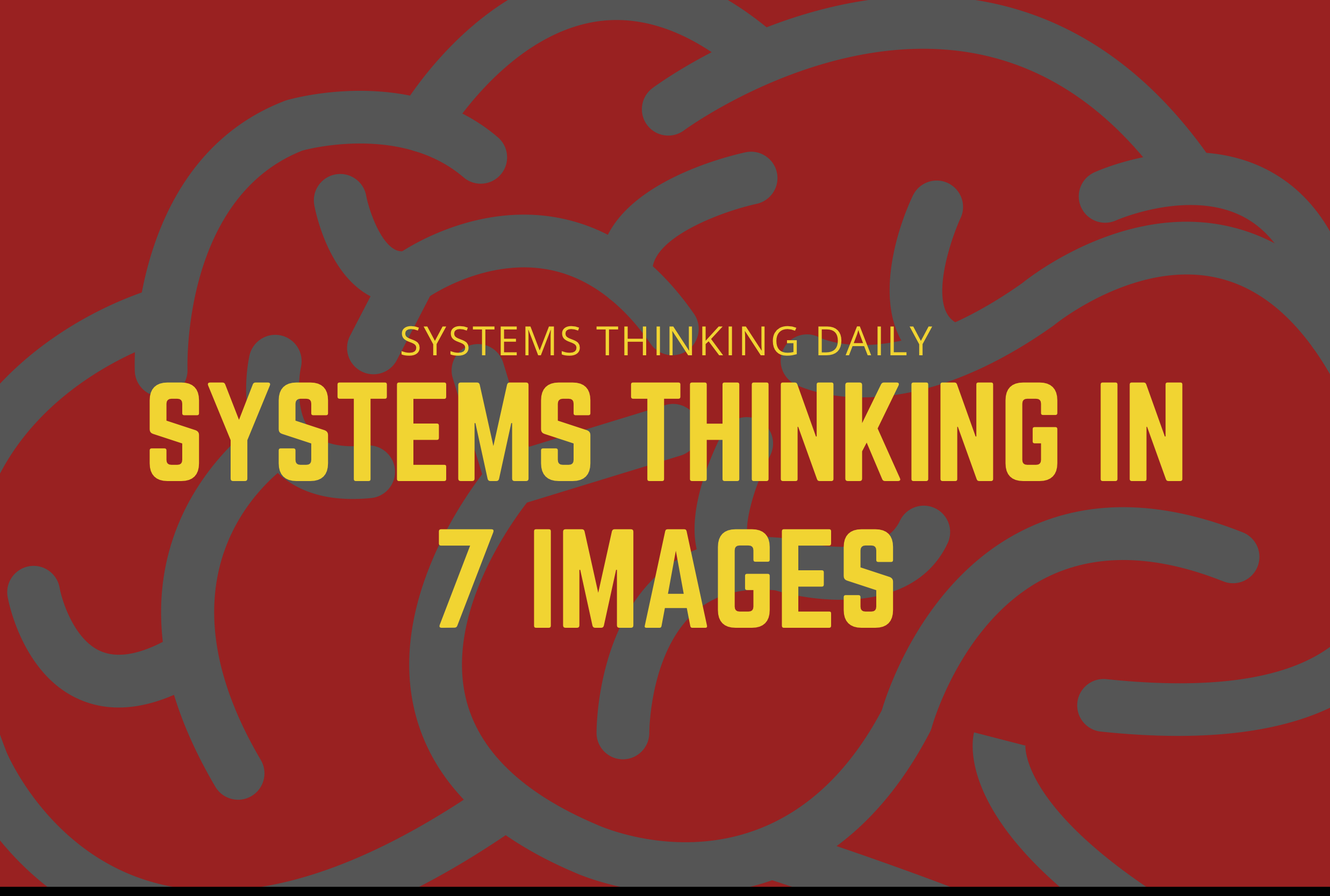Systems Thinking version 4.0
Prominent scholars in the field accept that the history and development of systems thinking has occurred in "waves" as originated by Flood, Jackson, and Keyes[1][2] and built on by Midgley, et. al.[3][4][5] This metaphor was extended in the late '90s early '00s with Cabrera[6] [7] and Midgley [8] and the suggestion of a 4th Wave. The “waves” have proven to be a useful and powerful conceptual, historical, and pedagogical model (as long as we are aware of periodization bias and what’s-nextism bias). For a more in-depth review of the "waves" see Cabrera[6].
The Waves Metaphor
I believe the metaphor of "waves" confuses people more than it enlightens them. That's not to say that the idea underneath the metaphor isn't valid: Systems Thinking (ST) evolved incrementally with punctuated "paradigm shifts" demarcating discrete and important changes. That's not the issue. The issue is that the wave metaphor suggests that the waves came and went. But they did not. They still exist today. In other words, this metaphor suggests that the subsequent wave "replaces" the one before it rather than the reality that each subsequent wave expanded upon the prior wave. Although scholars who write about the waves generally accept that the waves do not replace each other, the metaphor itself miscommunicates this fact. Most notably, people new to the field assume (based on the metaphor) that each wave is the current state of the field. This is problematic as it is not how the field sees itself nor how things play out on reality. For example, a single organization, let's say a company, has within it departments that are almost entirely working under a Wave 1 ST understanding, while another department works under a Wave 2 understanding of ST. Yet, they are co-existing in the same company. We therefore see that what we perceive to be "new" waves are not replacements of the prior - but historical additions and paradigmatic shifts that also coexist in the present time.
Figure 1: Systems Thinking Waves
It is for this reason that I advocate for a different metaphor to replace "waves" to describe the field. The more accurate metaphor I would use is "versions." This communicates updates, much like software, in which the existing version is always evolving with improvements (big and small).
The waves metaphor fails us where succession is concerned; whereas the version metaphor is more accurate because it includes all the previous versions as an "update." Thus, we could think of the waves of ST as:
- ST Version 1.0,
- ST Version 2.0,
- ST Version 3.0, and
- ST Version 4.0
Figure 2: Systems Thinking Versions
This means that the important work that came before is subsumed into the new version, not rejected, ignored, supplanted, or "washed away." I think this metaphor is both more accurate and more clear; especially to newcomers to the field.
Versioning is not only a better metaphor than waves, it is also a well-developed process in other areas (like software see Figure 3) from which the Systems Thinking field could learn and develop its own modes and practices.
Figure 3: Software versioning standardized and accepted numbering routines such as major, minor and lesser "patches" in the evolution of versions.
Let's call them “Versions”
The first version of ST (ST version 1.0) was like a tidal wave. It was new and exciting and challenged some of the places where science was failing in its own purpose to expose the mysteries of the universe. ST was largely a critique not only of science itself (which it was in total alignment with) but with the way science had come to be done:
- it was [absurdly] reductionistic;
- often missing the larger whole system, it lacked context;
- it focused too much on linear causalities.
Yet, ST v1.0 carried over one critically important bias of scientific malpractice: pure objectivity. Second order cybernetics and social context manifested a radical shift from a purely physical and objective perspective of systems thinking. Along with the social context in which any technical systems thinking occurred, this was a significant epistemological shift in systems thinking that meant that social context and second-order effects could never again be excusably ignored. ST version 2.0 was an immense epistemological contribution to the field.
ST Version 3.0 focused on (1) critical theory, (2) politics, and (3) [methodological] pluralism. The advent of v2.0 led to a "Cambrian explosion" of approaches and methods (both technical and social). In response, ST Version 3.0 offered important feedback on the previous version 2.0:
- There was not enough critical theory;
- We were not asking WHO was at the table; and
- Turf wars and tribalism negatively effected the field and purpose as a whole.
ST Version 3.0 therefore introduced a "big tent" pluralism that embraced the rich diversity of approaches and methods of systems thinking. It forced us to not only be systemic about our practices (v1.0), but also to consider the psycho-social context of these practices (v2.0). ST v3.0 suggested we consider who was at the table, who was being marginalized, and to accept the premise that a multitude of methods might be better than any single method.
ST v3.0 was a kind of Shangri-La of systems thinking, but it had two significant downsides:
- The diversity of the “Cambrian explosion” made it necessary to revert to silos, tribalism and isolationism within certain disciplines to decrease the cognitive dissonance associated with method-overload; and
- Newcomers to the field were suddenly being told that system thinking was n-teen different methods and approaches and that once they had sufficiently navigated and learned them all, they would be able to dive in and start systems thinking. (Of course, not one source [literally] told them this, but it was the net effect of the cacophony of voices.)
At a time when the world was becoming more complex due to the interconnectedness of globalization, systems thinking should have become more popular and vital. Instead, it was declining and being cannibalized.
Like the other versions, ST v4.0 resolves some of the problems we were experiencing (and seeing feedback for) in the previous version. ST v4.0 rose to the challenge of universality. As a young doctoral student, I needed to understand systems thinking and as a newcomer to the field in version 3.0 I was overwhelmed by the answers I got to what I perceived was a simple question and would get me a simple answer:
"What is systems thinking?"
Of course, I did not receive a simple answer, nor even a coherent one. It was all over the map. So, I explored more. I explored Bateson, Maturana, Midgley, Prigogine, Gell-Mann, Capra, Bertalanffy, Forrester, and many others. What I found was that if we simply practiced what many of these great minds preached but applied it to our own domain of systems thinking, there might be some progress. Bateson, for example, extolled that we must look for the "patterns that connect." Numerous great minds explained that "structure determines behavior" and that "mental models matter" but few asked what was the "underlying structure of mental models?" and "what are the patterns that connect a vast diversity of systems thinking approaches and methods?" I asked these questions, and no one had any answers. So as I studied them over time, I was able to tease out the underlying patterns of systems thinking in what I call, DSRP Theory.
I offer that ST v4.0 is governed by three important ideas that shift the paradigm:
- First, universality. That there are underlying patterns to our endeavors as systems thinkers. Universality is not only critical for newcomers, there is ample evidence in the history of science (proper) that when a discipline achieves some viable theory of universality it has a profoundly positive effect on the discipline itself;
- Second, that systems thinking is fundamentally both a physical and a cognitive science informed by studies of physical systems (physical chemical, biological, social, economic systems in the real world) and also studies of cognitive systems (e.g., cognition, metacognition, neuroscience, psychology, etc.). The former was not new but the latter was; and
- Third, that in order to understand these physical and cognitive systems we must take a complex adaptive systems approach (CAS).
Each of the ST versions provide only a few examples of different methods or approaches. But there are hundreds more. ST v4.0 differs from the first 3 versions because it is relatively new and identifies underlying “universals” to systems thinking that are gaining acceptance.
While work on universals is relatively new DSRP Theory is currently our best candidate for systems thinking [proper] and VMCL Theory is our best candidate for organizational systems leadership. This means that these theories have empirical support, yet there is room for improvement and a need for competing theories. It is a standing challenge in science and academia for theories to continue to be tested and validated to (hopefully) yield new hypotheses to be tested and validated.
The "Waves of ST" was a good concept that served its purpose of articulating the evolution of the field. But, I believe the waves metaphor needs to be replaced with the new metaphor - versions -as a more accurate summary of what is really occurring. Notably, the code of version 1.0 remains in the code of version 4.0, as little is lost but much is improved.
References
[1] Jackson, M. C., & Keys, P. (1984). Towards a system of systems methodologies. The Journal of the Operational Research Society, 35, 473–486.
[2] Flood, R., & Jackson, M. (1991b). Critical systems thinking: Directed readings. Chichester, UK: Wiley.
[3] Midgley, G. (2000). Systemic intervention: Philosophy, methodology, and practice. New York, NY: Kluwer Academic.
[4] Burton, M. (2003). Review of systemic intervention: Philosophy, methodology, and practice by Midgley G. (2000). Journal of Community and Applied Psychology, 13(4), 330–333.
[5] Leleur, S. (2014). The meaning of system: Towards a complexity orientation in systems thinking. International Journal of Systems and Society, 1(1), 22.
[6] Cabrera D., Cabrera L. (2019) What Is Systems Thinking?. In: Spector M., Lockee B., Childress M. (eds) Learning, Design, and Technology. Springer, Cham
[7] Cabrera, D. (2014). Cornell University Thinking v2.0 Conference. Cornell University
[8] Midgley, G. (2014). Cornell University Thinking v2.0 Conference. Cornell University
.png?width=150&height=150&name=CRL%20GOAT%20Logo%20(4).png)


